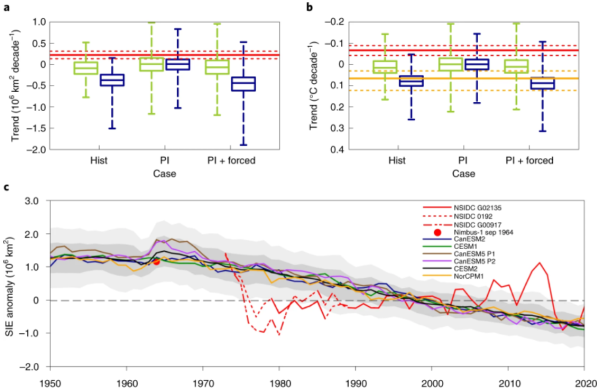Atlantic Niño is the Atlantic counterpart of El Niño in the Pacific, often referred to as El Niño's little brother. It was previously thought to have only regional influence on rainfall variability in West Africa, but a growing number of studies have shown that Atlantic Niño also plays an important role in the development of... Continue Reading →
El Niño’s little brother in the Atlantic may not be so little when it comes to its impact on hurricanes
Atlantic Niño, characterized by warm sea surface temperature (SST) anomalies in the eastern equatorial Atlantic, is the Atlantic counterpart of the Pacific El Niño. Due to its smaller size in zonal extent, it is often referred to as El Niño’s little brother. It was previously thought to have a limited regional influence on rainfall variability... Continue Reading →
The Global Ocean Conveyor Belt is Reshaping from the Southern Ocean
As the surface ocean warms and polar ice sheets melt due to increasing anthropogenic greenhouse gases in the atmosphere, near-surface stratification is increasing almost everywhere, including the major deep water formation regions in the high-latitude North Atlantic and around Antarctica. As a result, the global Meridional Overturning Circulation (MOC), also known as the global ocean... Continue Reading →
Java-Sumatra Niño/Niña: two long-lost siblings of El Niño
There are many siblings, cousins, and distant relatives of El Niño spanning the Pacific, Atlantic, and Indian Oceans who share a feature in common: ocean surface temperature anomalies along eastern boundaries linked to changes in the upwelling of cooler water from below. So far, climate scientists have identified a total of 14 members of this... Continue Reading →
Why climate models are unable to reproduce the observed Antarctic sea-ice expansion
Antarctic sea-ice has expanded over the period of continuous satellite monitoring, which seemingly contradicts ongoing global warming resulting from increasing concentrations of greenhouse gases. A variety of hypotheses have been proposed to explain the observed Antarctic sea-ice expansion and corresponding model–observation discrepancy, but the issue remains unresolved. In a new study published in Nature Climate... Continue Reading →
Future El Niño events will develop faster and persist longer
Previous studies based on the climate models participating in the Coupled Model Intercomparison Project (CMIP) have suggested an increase in the frequency of extreme El Niño events in the 21st Century in response to increasing greenhouse gases. Several studies have attributed these shifts in El Niño frequency and amplitude to the projected changes in the... Continue Reading →
ENSO plays little role in early-season Atlantic hurricane activity
This is a guest blog by Robert West. Robert is a postdoctoral research associate in the Northern Gulf Institute (NGI) at the Mississippi State University and is also affiliated with NOAA's Atlantic Oceanographic and Meteorological Laboratory. Differences in sea surface temperature anomalies (SSTAs) between the tropical Atlantic and Pacific oceans are known to influence atmospheric... Continue Reading →
Increasing river alkalinity slows ocean acidification in river-dominated ocean margins
Although ocean acidification (OA) is mainly driven by the ocean uptake of anthropogenic carbon dioxide from the atmosphere, multiple factors including changes in ocean temperature, biological processes, and river discharge influence its temporal progression. In a new paper accepted in the Geophysical Research Letters, a team of researchers from the Northern Gulf Institute of the... Continue Reading →
A Seasonal Probabilistic Outlook for Tornadoes (SPOTter) in the Contiguous U.S.
This new study accepted in Monthly Weather Review (Lee et al., 2021) presents an experimental model for Seasonal Probabilistic Outlook for Tornadoes (SPOTter) in the contiguous U.S. for March, April and May, and evaluates its forecast skill. This forecast model uses the leading empirical orthogonal function modes of regional variability in tornadic environmental parameters (i.e.,... Continue Reading →
Why does the Arctic temperature rise faster in the cold season?
The Arctic warming response to increasing greenhouse gas is substantially greater than the rest of the globe. It has been suggested that this phenomenon, commonly referred to as Arctic amplification, and its peak in boreal fall and winter result primarily from the so-called lapse-rate feedback, which is associated with the vertical structure of tropospheric warming,... Continue Reading →









